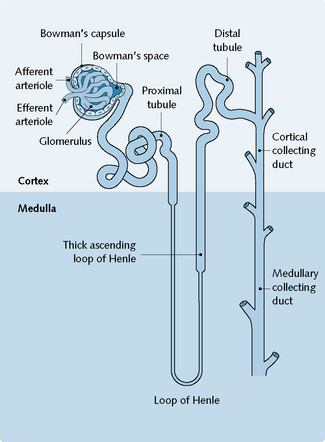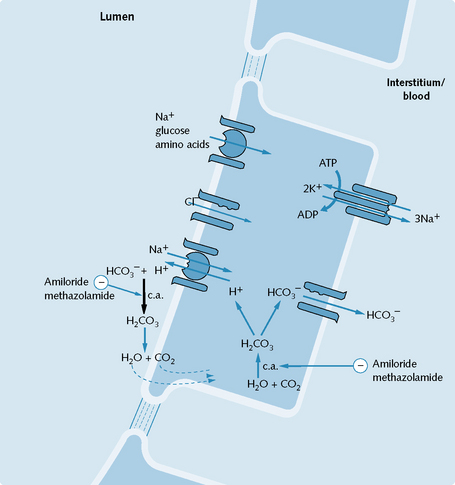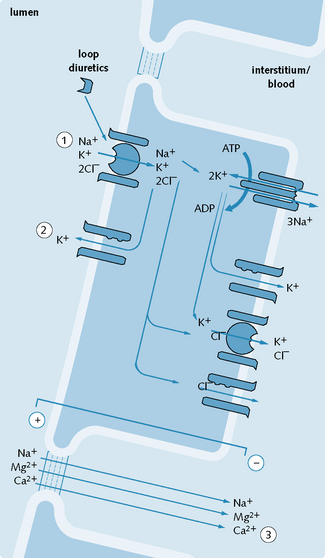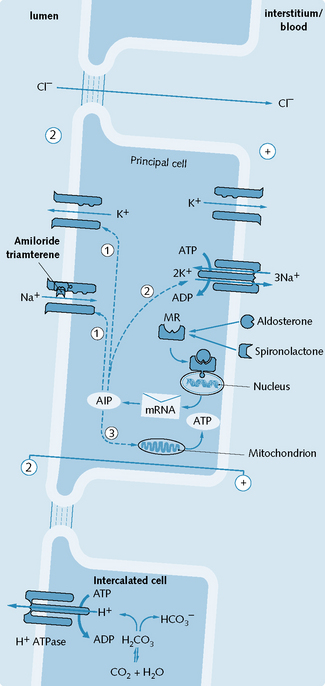7 Kidney and urinary system
The kidney
The nephron
Each kidney is made up of approximately one million functional units, known as ‘nephrons’ (Fig. 7.1). Each nephron consists of:
Tubular function
Sodium and water reabsorption
Approximately 99% of filtered water and sodium is reabsorbed, but none is secreted.
Sodium is pumped out of tubular cells into the interstitium by the Na+/K+ ATPase pump in their basolateral membrane. This forms a concentration gradient of sodium; high concentration within the filtrate of the tubule lumen, and a low concentration of sodium within the cytoplasm of the tubular cells. This gradient forms the basis of most reabsorption and secretion processes that subsequently occur. Sodium reabsorption from the lumen varies according to the section of the tubule (see Figs (7.2–7.5).
Loop of Henle
The loop of Henle consists of a descending limb, a thin ascending limb and a thick ascending limb.
Twenty-five per cent of filtered sodium is reabsorbed in the thick ascending limb (see Fig. 7.3), but this portion of the tubule is impermeable to water. Increase in the solute load (sodium) in the interstitium between the ascending loop and the collecting tubules sets up an osmotic gradient which subsequently permits water reabsorption from the collecting tubules – the countercurrent multiplier system.
Juxtaglomerular apparatus
Where the afferent and efferent arterioles enter the glomerulus, a group of specialized cells, the macula densa, are situated, in what is named the juxtaglomerular apparatus. These cells secrete renin, which is a fundamental part of renin–angiotensin system. The renin–angiotensin system is involved directly in vascular tone and in the release of aldosterone (Ch. 2).








